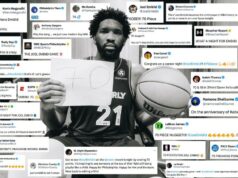
The San Antonio Spurs have had a frustrating start to the 2018 calendar year, going 10-9 in the team’s first 19 games since the start of 2018. Lineup changes and injuries have contributed to a sense of inconsistency within the team’s play that not only shows itself from game to game, but at times, from quarter to quarter. When examining the Spurs’ losses compared to their wins, several key factors stand out the most:
Playing on the Road
Much has been made of the Spurs’ losing road record this season. Mostly, the Spurs’ offense seems to get bogged down when playing away from the AT&T center. The Spurs score almost 10 less points per 100 possessions on the road and have a lower field goal percentage (47.8% at home to 43.4% away), three point percentage(37.6% at home to 34.3% away), and free throw percentage (79.8% at home to 76.3% away). The Spurs base their offense more on bigs posting up than most teams do in today’s modern NBA, with much of the offense being run through LaMarcus Aldridge. When the outside shooters aren’t hitting their shots, it allows opposing defenses to focus more attention to defending the paint, making it harder for the Spurs’ low post scoring to be successful.
Spurs’ Bench Production
How efficient San Antonio’s outside shooters are has a major effect on whether on not the Spurs win or lose, as mentioned above. For example, Patty Mills shoots 16.2% worse from 3 point range on average in Spurs losses than wins. Davis Bertans shoots 13% worse from 3 point range in losses, and Manu Ginobili shoots 9.3% worse from behind the arc. In the case of Bertans and Mills, their points per 100 possessions only drops 1.3 points and 1.1 points respectively, meaning they are taking more shots in losses to make up for that drop in efficiency, especially Mills who shoots 3.5 more field goal attempts per 100 possessions in losses.
Mills seems to be a scapegoat for some Spurs fans for many of the Spurs’ problems this year. When Mills is playing well, the spacing the Spurs have off the bench allows the offense of the second unit to flow, but when he is having an off shooting night, the second unit’s offense can stagnate. This is not ultimately Mills’ fault, though. If the Spurs’ were healthy, they would have both Kyle Anderson and Rudy Gay added to the bench lineup. As it stands, when one bench scorer is having an off-night, it can hinder the entire offense, but if and when the Spurs’ rotation returns to normalcy, the number of options off the bench will allow for players to have off-shooting nights without affecting the flow of the offense to the degree that it is now.
First Half Woes
Since January 1st, the Spurs have been dreadful in the first half of many games. Their average net rating for all first halves in that span is -3.9. That would rank them 23rd in the league if extrapolated for a full season. They have averaged an offensive rating of 99.0 points per 100 possessions in first halves since the start of the calendar year, good for 27th in the league over that time period. Second halves tell a different story for the Spurs, however. Since the start of 2018, the Spurs have had a net rating of 8.9 points per 100 possession, which would rank them 2nd in the league if extrapolated over a full season, behind the Golden State Warriors by only 0.2 points per 100 possessions. Their offense jumps from 27th in the league in first halves since the start of the year to 10th in second halves. Much of this can be attributed to the Spurs often falling behind early in games over the past several weeks, only to fight to make the games competitive in the second half.
Much of that can be attributed to strange lineups and rotations that should be adjusted by the time the playoffs arrive, but the Spurs are running out of time to solve some of these questions. If the Spurs continue to play at the level of a .500 team, they could slip to the 5th seed, surrendering home court advantage in the first round. This would make a deep playoff run difficult, even if Kawhi Leonard and Rudy Gay return at 100%.
All stats obtained from NBA.com/stats. Stats were obtained before the Spurs’ game against the Phoenix Suns on Wednesday Night





